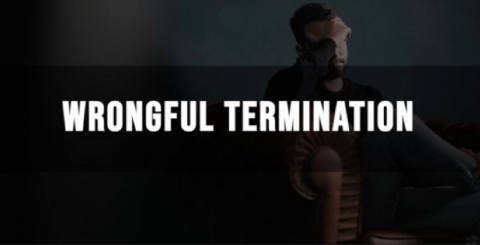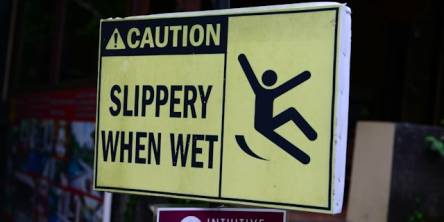Wrongful Termination: Know Your Rights And Navigate The Legal Process

Suffering from wrongful termination may leave you in a state of confusion and self-doubt about what you need to do to get justice. It is essential to understand what constitutes wrongful termination, your rights, and how the legal system works to address this issue effectively.
This article offers a general account of wrongful termination, how to proceed if wrongfully terminated, and tips for handling the situation. This way, you can safeguard your interests and guarantee that you will receive a fair trial.
What Is a Wrongful Termination
Wrongful termination is when an employer discharges an employee unlawfully, contrary to federal or state laws, employment agreements, and policies. It may occur for various reasons, for instance, discrimination on the grounds of race, color, gender, age, religion, or disability.
Other reasons that constitute wrongful dismissal include retaliation for reporting violations of the law in the workplace, reporting a breach to an investigative body, or exercising one’s legal rights, such as taking a family or medical leave.
What Constitutes Wrongful Termination
It is not always easy to determine if you have been wrongfully terminated, but some clues will make you realize your dismissal was unlawful. You might get fired contrary to the fact that you were performing well and had no prior written notice that you were not meeting the expected performance standards.
Any comment or action of your employer that may be regarded as race, sex, or age prejudice is a clear sign to consider. Furthermore, if you were dismissed soon after exercising a protected right, for example, reporting discrimination or harassment at work, this may be a sign of retaliation. Violating terms stipulated in an employment contract can also indicate wrongful termination.
It's essential to be aware of your rights as an employee. Federal laws like Title VII of the Civil Rights Act, the Age Discrimination in Employment Act (ADEA), and the Americans with Disabilities Act (ADA) protect employees from discrimination and retaliation. State laws may offer additional protections.
If you believe you have been wrongfully terminated, you have the right to file a claim with the Equal Employment Opportunity Commission (EEOC) or your state’s labor department. Understanding these rights and protections is the first step in addressing wrongful termination.
What to Do if You Have Been Fired Wrongfully
In case of wrongful termination, first, check your employment contract and corporate policies on employment termination to understand your rights and the company’s procedures. Therefore, obtain all the necessary paperwork, such as performance appraisals, emails, or any other communication that might be useful in your case.
Ask your employer to write a formal letter explaining the reasons for your termination. If you think you were discharged with discrimination or retaliation, you can file a complaint with the EEOC within 180 days of the discharge. It is highly advisable to seek an employment attorney since they can assist, guide, and even legally represent their clients.
How to Navigate the Legal Process
The process of seeking justice for wrongful termination is complicated. When you file a complaint with the EEOC, they will investigate your claim. If the EEOC finds merit in your case, they can try to negotiate a settlement between you and your employer. If the EEOC fails to settle the dispute, they will grant you a ‘Right to Sue’ letter to enable you to proceed to the court.
Your attorney will assist you in filing the lawsuit and collecting evidence to ensure your case is strong. It can include depositions, interrogatories, and other pre-trial procedures. Most wrongful dismissal claims go through negotiations, but if the two parties cannot agree, the case is taken to court, where the judge will decide.
Summary
Getting fired can be frustrating and painful, but knowing your rights and the legal proceedings will help you in your fight for justice. Thus, by understanding the signs of wrongful termination, your legal rights, and getting legal advice, you can handle the situation to your benefit.
It is very important to seek legal help from an employment lawyer. When you seek the services of a lawyer, you can be sure that your case is handled appropriately, and you have a high chance of finding justice and the compensation you deserve.
Similar Articles
Train accidents can cause devastating losses to victims. They may incur serious injuries, emotional distress, and financial strain for those affected
The Centers for Disease Control and Prevention (CDC) report that approximately seven out of every 1,000 babies born in the United States experience birth injuries.
Losing a loved one in a fatal car accident is an unimaginable tragedy, often leaving families overwhelmed by grief and facing financial hardships. Medical bills, funeral expenses, and the sudden loss of income can add to the emotional burden.
The Centers for Disease Control and Prevention estimate that about 1.7 to 3.8 million traumatic brain injuries happen each year in the US and 10% of these cases are due to sports and recreational activities.
Drivers hit pedestrians when they are walking, jogging, or running. Unfortunately, because walkers aren't protected, these accidents often end in serious injuries or death.
Accident lawyers specialize in personal injury law, helping clients obtain compensation for injuries and losses due to various accidents. Their expertise is crucial in navigating the complex legal landscape that follows these unfortunate events
Explore your legal rights and options as an injury victim. Learn how to seek justice and compensation with our comprehensive guide.
Personal injury lawyers are legal professionals who specialize in representing individuals who have sustained injuries, both physical and emotional, due to the negligence or wrongdoing of another person, company, government agency, or any other entity.
Workplace safety is a paramount concern in Texas, where slip and fall accidents can result in serious injuries, contributing to the significant injury statistics seen across the state.









